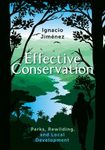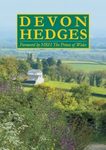By: Lance B McNew(Editor), David K Dahlgren(Editor), Jeffrey L Beck(Editor), Paul R Krausman(Foreword By)
1023 pages, 94 colour photos and colour illustrations, 17 b/w illustrations, tables
![Rangeland Wildlife Ecology and Conservation Rangeland Wildlife Ecology and Conservation]()
Click to have a closer look
About this book
Contents
Customer reviews
Biography
Related titles
About this book
This book reviews the importance of ecological functioning within rangelands considering the complex inter-relationships of production agriculture, ecosystem services, biodiversity, and wildlife habitat.
More than half of all lands worldwide, and up to 70% of the western USA, are classified as rangelands – uncultivated lands that often support grazing by domestic livestock. The rangelands of North America provide a vast array of goods and services, including significant economic benefits to local communities, while providing critical habitat for hundreds of species of fish and wildlife.
This book provides a compendium of recent data and synthesis from more than 100 experts in wildlife and rangeland ecology in Western North America. It provides a current and in-depth synthesis of knowledge related to wildlife ecology in rangeland ecosystems, and the tools used to manage them, to serve current and future wildlife biologists and rangeland managers in the working landscapes of the West. The book also identifies information gaps and serves as a jumping-off point for future research on wildlife in rangeland ecosystems. While the content focuses on wildlife ecology and management in rangelands of Western North America, the material has important implications for rangeland ecosystems worldwide.
Contents
1. Introduction to Rangeland Wildlife Ecology and Conservation
Part I Rangeland Ecosystems and Processes
2. Rangelands of Western North America
3. A History of North American Rangelands
4. Western Rangeland Livestock Production Systems and Grazing Management
5. Manipulation of Rangeland Wildlife Habitats
6. Role and Management of Fire in Rangelands
7. Water is Life: Importance and Management of Riparian Areas for Rangeland Wildlife
8. Rangeland Biodiversity
Part II Species Accounts
9. Prairie Grouse
10. Sage-Grouse
11. Quails
12. Rangeland Songbirds
13. Wetland Birds of Rangelands
14. Avian Predators in Rangelands
15. Burrowing Rodents
16. Mesocarnivores of Western Rangelands
17. Black-tailed and Mule Deer
18. White-tailed Deer
19. Pronghorn
20. Elk
21. Feral Equids
22. Mountain Ungulates
23. American Bison
24. Large Carnivores
25. Amphibians and Reptiles
26. Insects in Grassland Ecosystems
Part III Social-Ecological Considerations
27. Wildlife, Rural Communities, and the Rangeland Livelihoods they Share: Opportunities in a Diverse Economies Approach
28. Living with Predators: A 20-year Case Study in the Blackfoot River Watershed of Montana
29. A Perspective on Rangeland and Wildlife Disciplines: Similarities Over Differences
30. Future of Rangeland Wildlife in North America
Customer Reviews
Biography
Lance McNew is Associate Professor of Wildlife Habitat Ecology in the Department of Animal & Range Sciences at Montana State University. He and his students conduct applied research in wildlife ecology with a focus on space use and demography in working landscapes.
David Dahlgren is an Associate Professor and Rangeland-Wildlife Extension Specialist in the Department of Wildland Resources at Utah State University. Dr Dahlgren's lab conducts Extension programming, including applied research, for rangeland-associated wildlife, with a focus on species of conservation concern and addressing the information needs of those who manage them and their habitat.
Jeffrey Beck is a Professor of Wildlife Habitat Restoration Ecology in the Department of Ecosystem Science and Management at the University of Wyoming. Dr Beck's lab conducts applied research to better understand the ecology of rangeland wildlife populations and how they respond to direct and indirect impacts. Dr Beck collaborates with private, state, and federal partners to provide scientific results that better inform conservation for species of concern.
By: Lance B McNew(Editor), David K Dahlgren(Editor), Jeffrey L Beck(Editor), Paul R Krausman(Foreword By)
1023 pages, 94 colour photos and colour illustrations, 17 b/w illustrations, tables




































